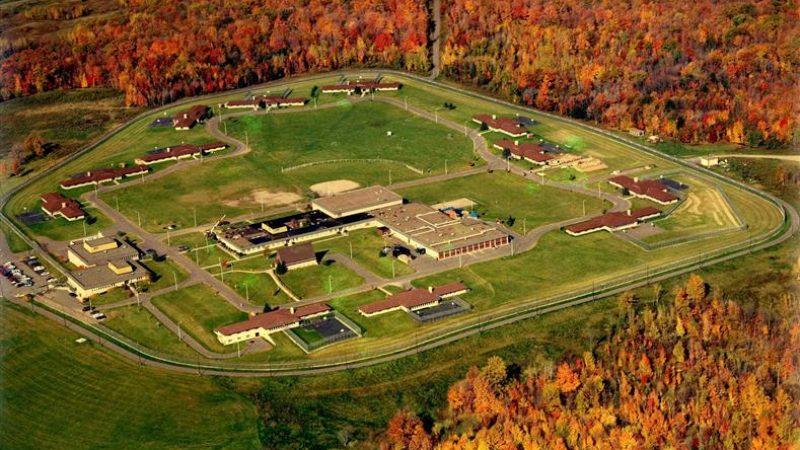Action could begin this week on a comprehensive overhaul of Wisconsin’s prison system, marking a significant step toward addressing longstanding challenges within the state’s corrections facilities. Lawmakers and stakeholders are preparing to advance measures aimed at reforming policies, improving conditions, and enhancing rehabilitation efforts. As debates unfold, here’s what residents and observers need to know about the potential changes and their implications for Wisconsin’s criminal justice landscape.
Potential Legislative Moves Signal Major Prison Reform in Wisconsin
The Wisconsin Legislature is poised to initiate significant changes aimed at transforming the state’s prison system. Lawmakers have introduced a comprehensive package that focuses on reducing recidivism rates, improving inmate rehabilitation programs, and addressing long-standing concerns about prison overcrowding and staff shortages. Key proposals include expanding access to vocational training, increasing mental health services, and revising sentencing guidelines to better align with current criminal justice research.
Among the major components under discussion are:
- Investment in educational and job training programs designed to equip inmates with skills for successful reintegration.
- Enhanced mental health and substance abuse treatment to address root causes of criminal behavior.
- Reform of parole and sentencing policies to reduce unnecessary incarceration periods.
- Improvements in prison infrastructure to ensure safer living and working conditions.
| Reform Focus | Expected Impact |
|---|---|
| Education & Training | Lower Recidivism |
| Mental Health Services | Improved Well-being |
| Sentencing Reform | Reduced Prison Population |
| Infrastructure Upgrades | Safer Facilities |
Key Challenges Facing the State’s Correctional System
The state’s correctional system grapples with mounting issues that have long hindered its effectiveness and safety. Overcrowding remains a persistent problem, with facilities operating beyond their intended capacity, putting both inmates and staff at increased risk. Additionally, outdated infrastructure compounds the challenges, failing to meet modern standards for security and rehabilitation. Mental health services are critically underfunded, leaving many incarcerated individuals without the necessary support, which exacerbates recidivism rates.
Staff shortages add further strain, leading to high turnover and burnout among correctional officers. These shortages also impact the implementation of reform programs aimed at reducing reoffending. Financial constraints limit investment in technology and rehabilitation initiatives, while community reintegration programs are insufficiently developed, creating a cycle that perpetuates incarceration. The following table summarizes some of the system’s key stress points:
| Challenge | Impact | Current Status |
|---|---|---|
| Overcrowding | Safety risks, reduced program access | 110% of capacity |
| Staff Shortages | High turnover, increased violence | 20% vacancy rate |
| Underfunded Mental Health | Inadequate care, higher recidivism | Limited resources |
| Outdated Facilities | Security vulnerabilities, poor conditions | 60% older than 30 years |
Experts Recommend Expanding Rehabilitation Programs and Improving Facilities
Leading criminal justice experts emphasize that enhancing rehabilitation efforts within Wisconsin’s prison system is a crucial step toward reducing recidivism and promoting public safety. Expanding educational and vocational training programs, coupled with increased access to mental health and substance abuse treatments, could transform correctional institutions from punitive environments into centers for genuine reform. These improvements are viewed not only as humane measures but also as cost-effective strategies for easing the burden on courts and communities.
Facility upgrades are equally important to support these expanded programs, with advocates calling for modernized spaces that foster learning and therapeutic engagement. Improved prison infrastructure can create safer, more supportive conditions for both inmates and staff, facilitating rehabilitation goals. Below is a summary of expert recommendations designed to overhaul rehabilitation within the state’s correctional facilities:
- Increased funding for vocational training in trades and technology
- Expanded mental health services with more qualified professionals
- Implementation of addiction recovery programs tailored to inmate needs
- Improved classroom and workshop facilities to enhance learning environments
- Staff training on trauma-informed care to better support inmate rehabilitation
| Recommendation | Expected Impact |
|---|---|
| Vocational Training Expansion | Higher employment rates post-release |
| Mental Health Services | Reduced behavioral incidents |
| Facility Modernization | Safer, more effective rehabilitation |
In Conclusion
As the state legislature prepares to take up measures aimed at overhauling Wisconsin’s prison system, stakeholders and residents alike will be watching closely. With action potentially starting this week, the coming days could mark a pivotal moment in addressing the long-standing challenges within the state’s corrections framework. Stay tuned to the Milwaukee Journal Sentinel for continued coverage on this developing story.
